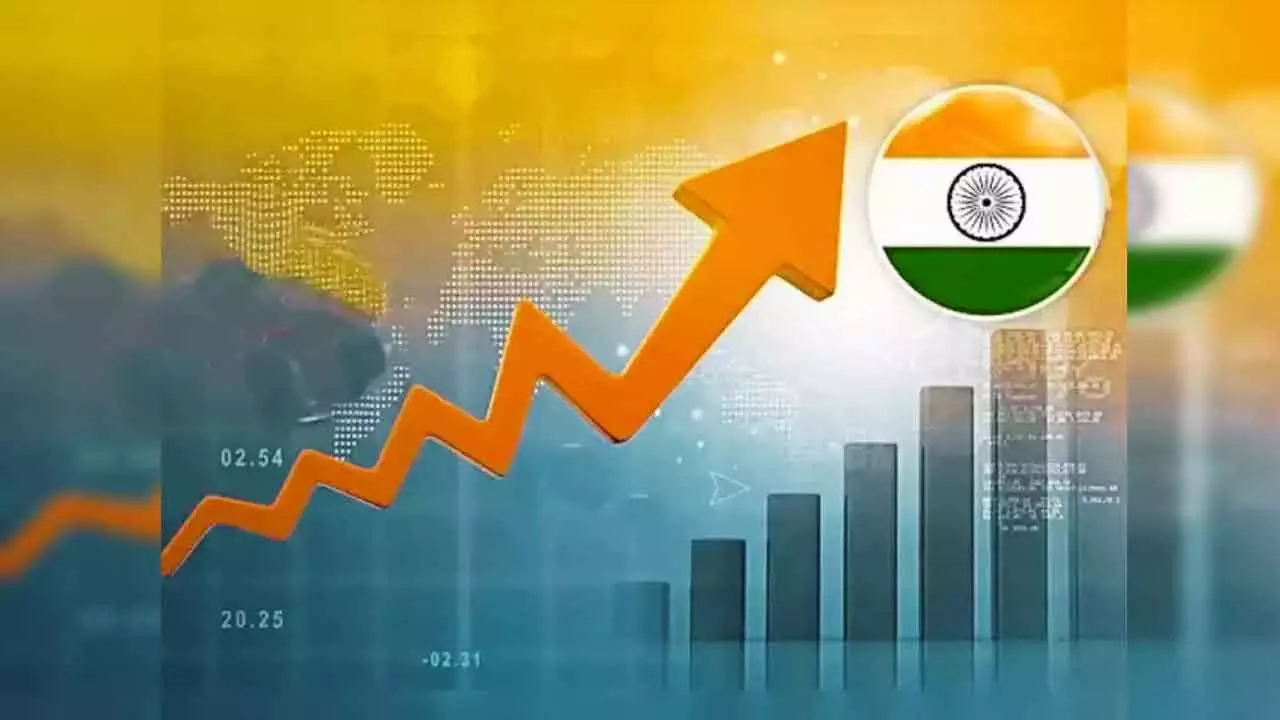Challenges Up Ahead For The $4 Trillion Economy
Challenges Up Ahead For The $4 Trillion Economy

India has overtaken Japan to become the world’s fourth-largest economy, reaching $four trillion. Its GDP for fiscal 2026 is expected to be around $4,187 billion, while Japan’s GDP is projected slightly less at $4,186 billion. Backed by IMF data, India is expected to grow rapidly and may become the third-largest economy by 2027. It is expected to grow at 6.2 per cent in 2025 and 6.3 per cent in 2026. This makes it the fastest-growing large economy in the world. In comparison, the global economy is likely to grow by only 2.8 per cent in 2025 and three per cent next year. Beyond just the next few years, S&P Global Market Intelligence projections indicate that India’s nominal GDP will increase from $3.5 trillion in 2022 to $7.3 trillion by 2030. This extraordinary acceleration will gradually inch India to the very pinnacle. But then this expansion has its own challenges, including anxiety over consumer spending, climate change risks and structural economic dependencies. Addressing these challenges will be vital to sustaining momentum and long-term financial resilience.
Infrastructure, human capital, and innovation investments will be crucial as India expands its growth path. Creating economic fronts and global scalability continuously and beyond just a symbolic achievement, the next step for India to become a $four trillion economy is beyond a number. India is where, in the coming year, it will have to prove its credentials in a fast world of growth, where it is recalibrating to provide sustainable and all-inclusive growth. The digital revolution in India is boosting e-commerce and transforming the retail consumer market. By 2030, an estimated 1.1 billion Indians will have access to the Internet, which more than double the estimated 500 million users in 2020. The country has received huge FDIs in the last 10 years, as foreign investors are confident about the Indian economy. Many of the biggest global tech companies have sunk billions into India, lured by its vast, rapidly growing domestic consumer market. With heightened geopolitical tension, particularly with China, MNCs have been compelled to diversify their supply chains. Under the China+1 strategy, India has become a preferred alternative with its added benefits of political stability and a huge skilled workforce.
The roadmap for the $5 trillion economy in light of global economic and geopolitical circumstances, underscores the need for caution on the depreciation of the Indian currency against the dollar, which could delay the country’s march towards becoming a $five trillion economy. The rupee fell to record low of 85.93 to the dollar. India’s economic growth is largely fueled by private consumption, particularly in rural areas. Also, the urbanisation and lifestyle shifts have led to an increase in consumption-led growth. India’s urban population is expected to touch 600 million by 2030. The demographic dividend is a unique edge—India’s median age is just 29 years, offering productive workforce for the coming decades. The way forward is to diversify its trade partnerships to reduce dependency on volatile global markets. Strengthen domestic manufacturing through various initiatives and schemes. Invest in digital transformation to enhance financial inclusion and governance. Focus on sustainable economic policies that balance growth with environmental concerns.

